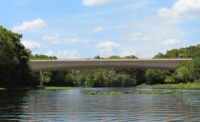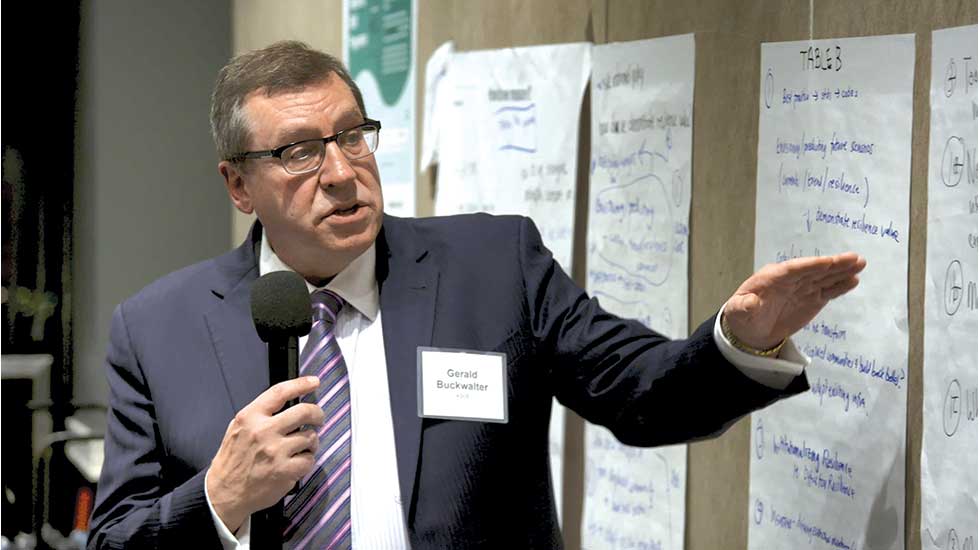ENR 2019 Top 25 Newsmakers
Gerald Buckwalter: Strategist's Vision Propelled ASCE Project to Imagine Tomorrow's Infrastructure

Gerald Buckwalter, ASCE's chief operating and strategy officer, detailed some of the potential impacts from a pandemic that the association's Future World Vision research project envisioned for future infrastructure systems, and society in general.
PHOTO COURTESY AMERICAN SOCIETY OF CIIVIL ENGINEERS

ASCE’s unveiling of its Future World Vision concepts last October, as led by researcher Alex McDowell (above), was the product of extensive research, as well as the leadership of Gerald Buckwalter (previous photo), who first envisioned the massive effort.
PHOTO BY SCOTT JUDY


Years before Gerald (Jerry) Buckwalter became involved with the American Society of Civil Engineers—where he has served as chief operating and strategy officer since last June—he had been thinking a lot about the future of infrastructure. The former director of strategy at Northrop Grumman came to ASCE’s attention via his terms on the National Infrastructure Advisory Council during the Bush and Obama administrations.
About nine years ago, he joined ASCE’s Industry Leaders Council “as a kind of orthogonal thinker” providing an outsider perspective, Buckwalter says. From there, he urged ASCE to find a way to visualize the “massive change” coming not only to the profession, but to the world.
Unveiled last October in Miami, the Future World Vision project imagines what infrastructure systems might look like up to 50 years from now, after being shaped by current long-term trends being driven by climate change, alternative energy, the use of advanced construction materials and autonomous vehicles, among others.
It was Buckwalter’s championing of the effort that persuaded ASCE leadership to commit to a four-year project requiring a multimillion-dollar investment, including the hiring of Los Angeles-based Experimental Design Inc., which led the research effort that ultimately visualized five future world concepts. Plans for the effort include the creation of a digital model that can be used to visualize future environments.
Alex McDowell, creative director at Experimental Design, says the challenge to visualize future infrastructure systems was “much more interesting” than those his firm usually undertakes because “it’s driven by real-world conditions.” From the start of the research effort, McDowell explains, “The real revelation was how absolutely engaged the board members and other experts were. It was really exciting.”
While ASCE continually assesses the future of civil engineering, including past research efforts, Buckwalter pushed the boundaries of what was needed, says Nick DeNichilo, president and CEO of Mott MacDonald North America, and current chairman of ASCE’s Industry Leaders Council. “Jerry’s really stepped up,” he says. “It is due to his leadership skills and his resilience that we’ve been able to take this initiative to where it is.”
So far, the effort has received positive feedback not only from ASCE members, but college students, academia and even some nongovernmental organizations. Several universities are considering partnering with ASCE and contributing to the funding of the project, which the association set up as a separate entity.






